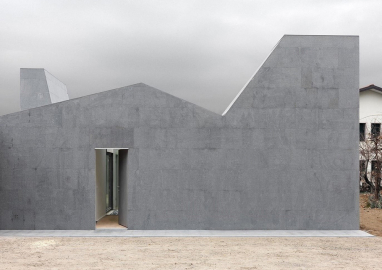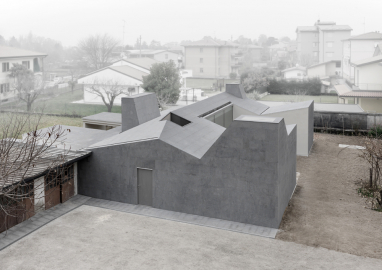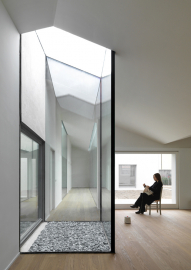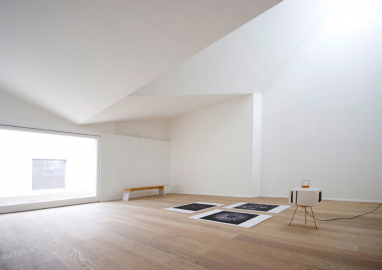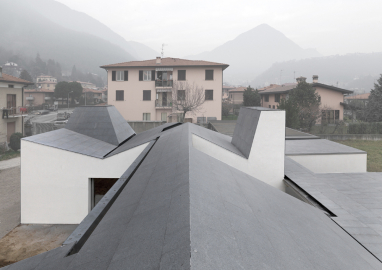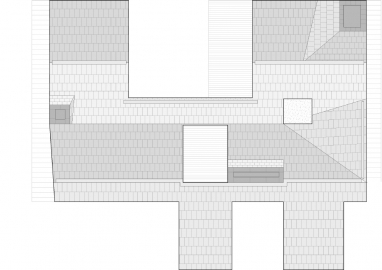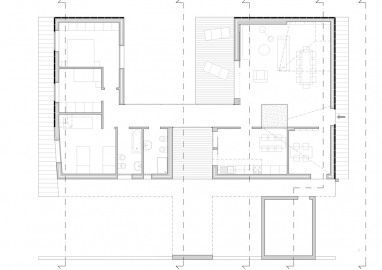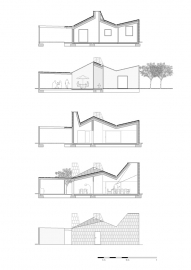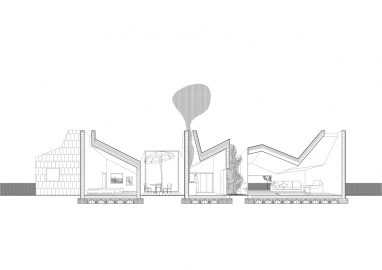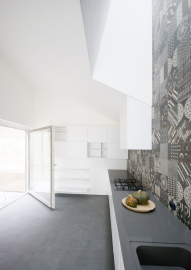Wigglyhouse - single family home
The house tries to protect itself from a difficult context reducing the openings toward the outside.
The pitch of the roof folds restless in search of the zenithal light in an almost gestural attitude, generating three light stacks, “wiggling” the sequence of the lines of the roof section.
The Italian architect Cesare Cattaneo assumed in "the house for the Christian family" a growth hypothesis of the building organism; the new paradigms on which the evolution of the families of our times are assumed call for a deep reflection on the status of the new housing models.
What is proposed is an ability to survive to subsequent configurations, at least for some key spaces of the house, but also an organism with a spatial structure that is able to grow in the future.
So the project is not completely saturated by the volume allowed for the lot, occupying it in the manner of a matrix, which leaves voids in the plan and arranges the rooms along a North-South axis, waiting to be completed and added in the future.
Wiggly house is a single-family residential building located in a difficult context 50km away from Milan in Italy, characterized by multi-storey buildings that surround it.
Because of this promiscuity, the house tries to protect itself reducing the openings toward the outside as much as possible, compensating with big or smaller patios, both closed and open, that give light to the inner spaces in a more suitable way.
The covering reaffirms this principle. Canadian gray granite covers the entire building to symbolize this idea of protection with the exception of the walls where the volume is subtracted by the grey-plaster made patios.
This way the building tries to open upwards:
the pitch of the roof folds restless in search of the zenithal light in an almost gestural attitude, generating three light stacks in the living room,in the kitchen and in the “meditation room” at the end.
The pitches of the roof alternate, “wiggling” the sequence of the lines of the roof section.
The building’s construction system is simple, combining reinforced concrete and structural tiles.
The current energy efficiency policy suggested triple-layered insulation and a heat pump system with a low-temperature heating solution.
The reinforced concrete and granite cladding protect the building from the sunlight in summertime, while the low-density insulation panels offer resistance to lower temperatures.
The heat pump system is paired with solar panels to enhance the building’s energy performance.
Wisely positioning the openings on opposing sides allows for optimal natural ventilation.
Zenith lighting and big low-emissivity, slightly reflective glass windows fill the house with natural light.

